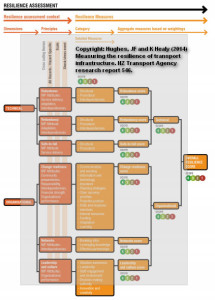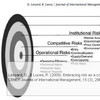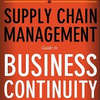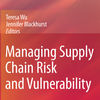 Is it possible to devise a simple framework for assessing the resilience of the transport infrastructure? The answer is Yes, and the New Zealand Transport Agency has done so. That said, it is not a “simple” framework. It is comprehensive, it is academically well-founded, it is practical, but it is not easy to put into use. Nonetheless, New Zealand has done that, too. In my opinion, it is something many countries can learn from.
Is it possible to devise a simple framework for assessing the resilience of the transport infrastructure? The answer is Yes, and the New Zealand Transport Agency has done so. That said, it is not a “simple” framework. It is comprehensive, it is academically well-founded, it is practical, but it is not easy to put into use. Nonetheless, New Zealand has done that, too. In my opinion, it is something many countries can learn from.
My own struggles
I came across this report on Measuring the resilience of transport infrastructure, published by the NZ Transport Agency, while trying to come up with a similar means of measure for the Norwegian road network. The measure would be put into use (among many other criteria) for prioritising investment projects in our National Transport Plan, a ten-year-plan that is revised every four years and that outlines how the Government intends to prioritise resources within the transport sector. The emphasis here is on “outlines” and “intends”, since the plan is not a commitment, merely an intention, and funding has to be allocated and voted upon by the parliament every year. Still, the four national agencies that are responsible for air, sea, rail and road transport in Norway spend considerable resources for finding projects, evaluating them and prioritising them, just to see the politicians then preferring the politically attractive projects over the economically attractive projects, as I wrote in a post some time back on why the world’s richest country has the world’s worst roads.
Resilience defined
Anyway, back the New Zealand report, and the reason for mentioning it on this blog, is the thoroughness with which the subject of resilience is described, and then narrowed down into two components: technical resilience and organisational resilience.
But before I get to that point, what enticess me most of all is their definition of resilience:
The concept of resilience is wider than natural disasters and covers the capacity of public, private and civic sectors to withstand disruption, absorb disturbance, act effectively in a crisis, adapt to changing conditions, including climate change, and grow over time.
As the report states, this definition rightly acknowledges that the service the infrastructure delivers will be disrupted, due to damage to the infrastructure; however, the service is able to reduce the possibility of failure, adapt and recover from a disruptive event and/or gradual external changes over time.
This reminds me of one my previous posts, about resilient organisations. There, resilience is about a company’s capacity to benefit from unlikely events, events which could have turned into threats, but instead were turned into opportunities. It is about the capacity to take advantage of serendipity, to take advantage of involuntary sagacity.
Two dimensions of resilience
The reseach report goes through a number of approaches towards resilience, citing academic references and relevant literature, and focuses on the key point, that resilience has two dimensions: organisational and technical:
Technical resilience: The ability of the physical system(s) to perform to an acceptable/desired level when subject to a hazard event.
Organisational resilience: The capacity of an organisation to make decisions and take actions to plan, manage and respond to a hazard event in order to achieve the desired resilient outcome.
I think this makes sense. While you can invest in strengthening your infrastructure techincally, this will not make you any more resilient unless the organisation(s) responding to an event are skilled, prepared and trained towards it.
Within these dimensions the authors describe underlying principles of both technical and organisational resilence:
Technical:
Robustness: the ability of elements, systems and other units of analysis, to withstand a given level of stress or demand without suffering degradation or loss of function
Redundancy: the extent to which elements, systems, or other infrastructure units exist that are substitutable, in the event of disruption, degradation, or loss of functionality.
Safe-to-fail: the extent to which innovative design approaches are developed, recognising that the possibility of failure can never be eliminated.
Organisational:
Change readiness: the ability to sense and anticipate hazards, identify problems and failures, and to develop a forewarning of disruption threats and their effects.
Networks: the ability to establish relationships, mutual aid arrangements and regulatory partnerships, understand interconnectedness and vulnerabilities across all aspects of supply chains and distribution networks.
Leadership and culture: the ability to develop an organisational mind-set/culture of enthusiasm for challenges and opportunities.
As I see it, the authors have captured mots if not all of which that goes into resilience.
Overall resilience score
Based on the dimensions and principles the authors devise a resilience assessment framework that comes up with a final overall resilience score: Very High, High, Moderate and Low resilence.
Complicated? Maybe. Comprehensive? Yes.
Reference
Hughes, JF and K Healy (2014) Measuring the resilience of transport infrastructure. NZ Transport Agency
research report 546. 82pp
Author links
- linkedin.com: James Hughes
- K Healy
Download
nzta.govt.nz: Measuring the resilience of transport infrastructure
Related posts
husdal.com: Resilient organisations













